EUROPEAN TOUR 2009 PART V - NETHERLANDS, GERMANY
Ijmuiden, NL to Hamburg, DE
Ijmuiden, NL to Hamburg, DE
Start 55,099 miles (88,158 km) cumulative:
End 55,816 miles (89,305 km) cumulative
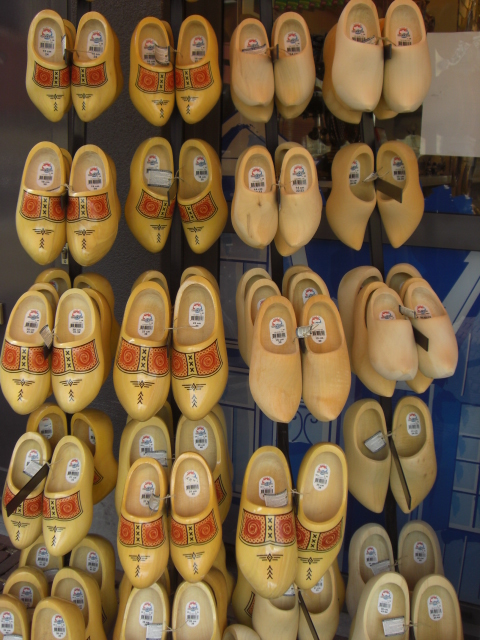
Section 1
Ijmuiden to Den Haag
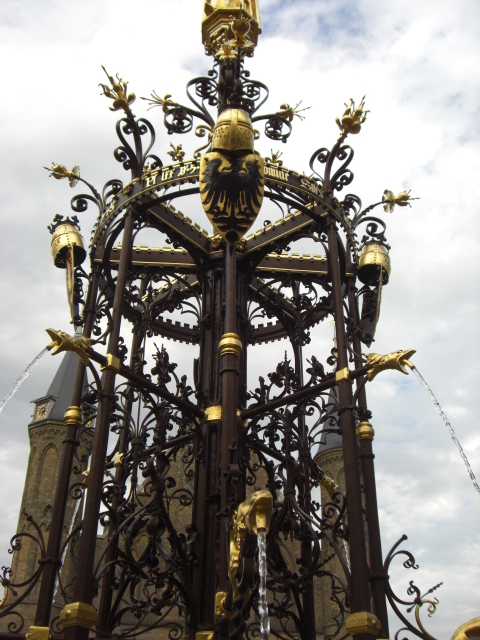
July 12 - 14
Rain splattered across our porthole window when we arrived in Ijmuiden. We'd
been expecting rain, but the weather report claimed that it would clear by
afternoon. At least the weather report onboard ship. That shown in the local
newspaper wasn't quite so optimistic.
It was Sunday. One thing we've discovered with the Netherlands is that on
Sunday's just about the only thing you can be sure will be open are the gas
stations and McDonalds. So between rain storms we hightailed it to the nearest
McDonalds to sit out the bad weather.
True to the ship's report, by around 1PM or so the rain stopped and we
started seeing some clearings. Since we were now so close to Hoek Van Holland,
since it's a flat easy ride, and since we had all day, we decided to head down
south once again to connect our route. Besides, we wanted to see Delft and Den
Haag. So on our bikes we climbed and headed off.
The ride along this section of Dutch coast meanders through nature preserves
broken up by fancy beach resorts. The reserves are for the miles and miles of
beach sand dunes that protect Holland's coast and inland dry areas. Tall white
sand dunes are covered with beach grasses that hold the sand in place. Through
all this run dozens of hiking and horse riding paths as well as the North Sea
Coastal bike route.
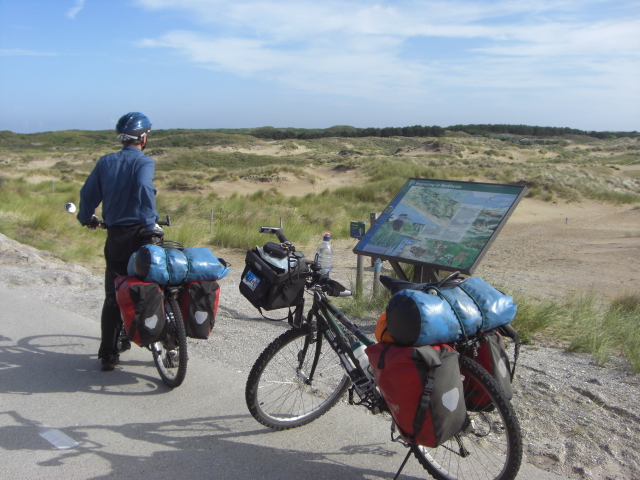
As the sky cleared for the afternoon, more and more bikers came out. Soon we
were passing bikers of all sorts going the opposite direction almost constantly.
This coastal route is one popular weekend ride. It was so nice to be back in the
amazing bike culture of Holland.
We rode as far south as the northern outskirts of Den Haag where we happened
upon a nice campground next to a race course. This would be our base for
exploring the Den Haag region.
The following morning we set out to complete our connected route to Hoek van
Holland. We decided to make a nice unloaded loop ride from the campsite. In the
morning we headed south along the coast thru the coastal beach resorts of
Scheveningen and Kijkduin.
We like these beach resorts better than those in the UK. They have nice
hotels and none of the cheesey arcade stuff so popular in Britian. The hotels
and condominiums also seemed to be of higher quality or at least they were
newer.
Once we reached Hoek Van Holland we flew back up the Rhine with a tailwind at
our backs for a few km and then north to the city of Delft. The ride was great.
We went along pretty canals filled with water lily pads and canal boats. The
canals wound their way through the old town of Maasland and then out into the
country side past farm fields. So picturesque.

Delft is such a pretty town and is where the famous Delft pottery comes from.
It's ironic. The Delft folks figured out how to make fine china so as to take
market share from the Chinese factories. Now much of the Delft sold to the
tourists is once again made in China. Although there are still a few pottery
factories around town producing that famous blue and white pottery.
Delft's most famous person was Johannes Vermeer. A fabulous painter, he lived
and worked in the city. One of his most famous paintings is a scene of Delft
life painted from across the river. It shows 1500s Delft with a couple very
small peasants in the foreground. You can still search out the spot where he
made this painting. We only had enough time for a quick tour of the most
important buildings before we had to ride back to Den Haag to our campsite for
dinner.
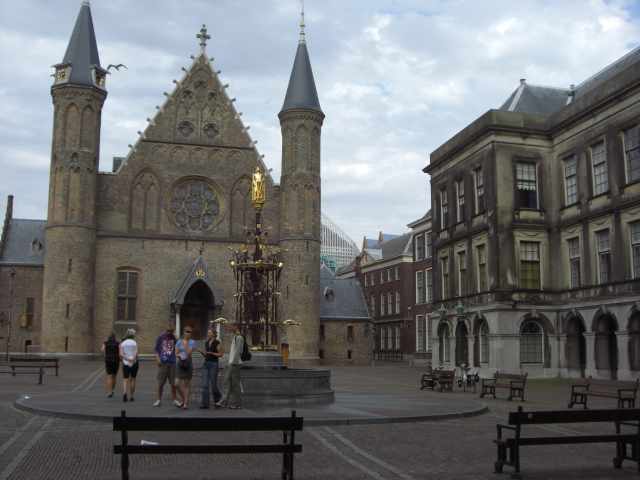
Summer has come to Europe. The day we'd been dreading for so long has
arrived. The kids are now out of school and the campgroind was packed.
Unfortunately for us several groups of teens had moved in around us. These were
15 and 16 year olds with absolutely no adult supervision.
The first night ater their arrival went somewhat all right. Partly because it
started raining at around 10 PM and did not quit. Day 2 wasn't so fun. The
drinking age in Holland is a mere 16. This group of 15 and 16 year olds had run
out to the store and brought back bottles of hard liquor. So as the night wore
on the noise and the horsing around got worse and worse. Finally after some of
them had gone to bed, we wound up in the late hours listening to a 15 year old
girl tell some older Germans all about how to get booze, pot, and sex. The
Netherlands has a very loose attitude about these things. We have to wonder if
it really is for the best.
The next day we went in to Den Haag to see the city and visit the one museum
we'd picked out. The city has a few interesting older buildings. But it really
seems to be an odd mixture of new right next to old. The older buildings have
been uprooted quite a lot here. We did pass by a couple of the royal palaces,
one in the city and the other in a nearby park. These are very nice.

We spent the afternoon in the Mauritshuis Museum. This is a relatively small
museum housed in a splendid 1800s mansion formerly owned by a military general.
The paintings were all donated by the royal family or purchased since the
original donation. Virtually each and every painting is a masterpiece. Most of
the works are of Dutch or Flemish origin. Although there are some Italian,
French, and German works as well.
Three of their most famous works are by the local painter, Johannes Vermeer.
His painting of Delft is one. His most famous painting is also here, Girl with a
Pearl Earing.
Vermeer was an absolute genius when it came to using light and shadow in a
painting to bring out spectacular results. His Girl with a Pearl Earing
demonstrates this talant to its fullest. The girl's face and eyes are turned
toward the viewer and half her face is bathed in light from the side. The paint
is applied so well to her lips they seem to almost shimmer as if they're wet. He
managed to make this most famous pearl look real with just 2 brush strokes, one
small white drop as a reflection of the light and a lighter brush of white for
the reflection of her white collar. This painting really is magnificent.
But there's a third Vermeer that's equally interesting. This one shows Venus
with three Nymphs one of which is washing Venus's feet. It's a large painting
with a very somber mood. Even though it's signed by Vermeer there was always
doubt as to it's authenticity. It was not a usual subject for Vermeer, the size
was too large for this type of painting, and most importantly the upper right
corner had a blue sky which he never, ever did.
In 1998 a researcher analyzed a bit of paint from this area to determine just
what pigments Vermeer used. Well, the pigments turn out to be from a time period
later that Vermeer's so there's no way he could have painted that blue sky. It
was added later. This confirmed that the painting really was his. Unfortunately
they couldn't remove the blue paint. So they painted over it in a brownish/green
foliage coloring in an attempt to recreate Vermeer's style.
Vermeer was definitely a gifted artist. But he worked extremely slow managing
to put out only about 2 paintings per year. There are only exactly 36 paintings
in existence that are known to be his. Until very recently he wasn't well known
either, having gone out of favor for some time. Probably the best thing for his
posthumous fame was the making of a movie and historical fictional novel about
the Girl with the Pearl Earing.
Another more prolfic artist represented in the museum is Rembrant. His group
portrait known as The Anatomy Lesson of Dr. Nicolaes Tulp is one of his most
famous works. This is where a bunch of men dressed in black with those very
Dutch white lace collars are studiously watching one of their members cut the
arm of a cadavor apart. Every one of the men was a prominent doctor and the
cadavor was of a previously executed nortorious criminal.
Rembrant produced a lot more paintings than Vermeer. He had an entire studio
fo artists helping him. He'd create the sketches for each work and then use the
aprentices or fellow painters to help get the work done. It was a business and
he was trying to produce as much product as he could.
Despite selling a lot of paintings his prolific spending habits still meant
that he was hounded by creditors and had to sell nearly all his own collection
to pay off his debts. Rembrant is known to have painted no less than 80 self
portraits. This gives an idea of just how many paintings he made during his
lifespan.
These are just a few of the paintings housed in the Mauritshuis. There are so
many more and the free audio guide gives a fabulous lesson in art history,
biographies of the artists, as well as Dutch history.
For instance, we learned that the Dutch invented portrait, landscape, and
still life painting. All were derived from the earlier religious paintings made
when the area was still catholic. After the protestant reformation, artists
found they needed to find new cliental. The wealthy were ready and eager.
Whereas before they'd paint a biblical scene of a feast, the wealthy found just
a scene of the food or flowers on the table was good. Patrons who used to have a
small portrait in a larger religious scene became the focus of the entire
painting. And landscapes formerly in the background of religious paintings now
became the entire painting with only small characters. It's interesting how
these new genres came into being.
Yes the money spent on this museum was well spent.
Section 2
Den Haag to Den Amsterdam
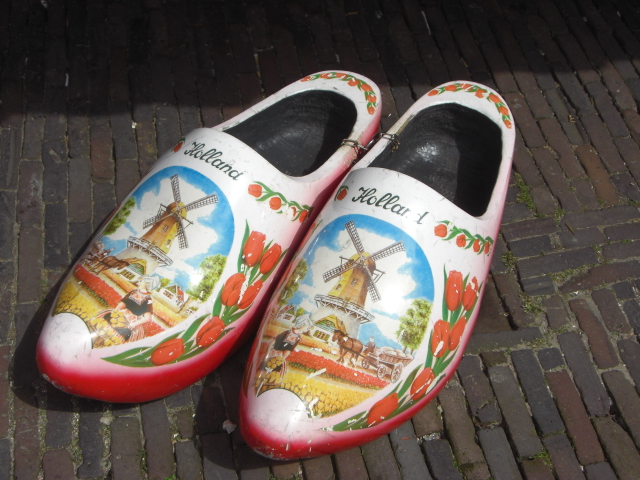
July 15 - 17
After a couple days around Den Haag we returned north via Haarlem and set up
camp in a naturekamperpark near Amsterdam. These particular parks are designed a
bit more like our U.S. State parks with tent and camper sites widely spaced in
the trees giving a lot more privacy. We really liked this type of camping as a
change of pace.
On the way north we made a quick stop at the pretty town of Haarlem. We made
our way to the main town square where we pulled out the Lonely Planet for its
brief town tour.
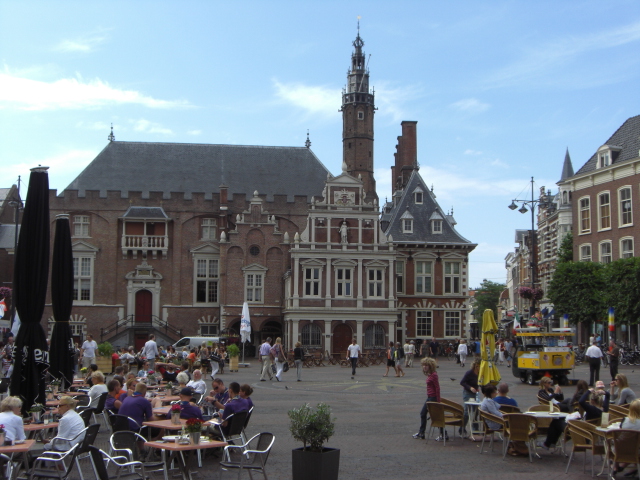
As we looked around we were approached by an affable Dutch man who promptly
asked us, in Dutch, if we were needing directions. Like all Dutch he quickly
switched to English when we asked him to. We got all sorts of tid bits on Dutch
history from him.
The 17th century was the Netherland's golden era both artistically and
financially. After they kicked out the Spaniards, following an 80 year long war
that is, they soon formed a form of republic through the loose union of a bunch
of city states. Eventually they decided to take on a monarchy like the rest of
Europe. But for a while they were basically ruled by a bunch of business men.
Two companies were formed, the Dutch East India Company and the Dutch West
Indies Company. The first quickly became one of the worlds most powerful trading
company specializing in trade with Asia and Africa. Because of this the
Netherlands became one, if not the richest country in the world.
The man we were speaking to mentioned that he'd listened to a speech given by
a Chinese-American writer about the global trading behavior of the Netherlands
and the U.S. Her conclusion is that the Netherlands' businessmen never had the
desire to conquer and occupy a country. Rather they preferred to have their man
at the top act as a trading agent with the local people. They didn't displace or
want to rule over the people, just do business with them. This writer observed
that the U.S. has in exactly the same manner. Once our coast-to-coast borders
were established we really have not continued with any kind of expansionism
especially when compared to such countries as Spain, Portugal, Russia, and
England.
We also asked him about the biking culture. He said that the Dutch have
chosen to give priority to bikes over cars in virtually all issues. If there is
a road that is too narrow for 2 way car traffic plus bikes, they will either
close the road to cars all together or make it a one way road with the side
lanes dedicated to bikes. Entire downtown areas are closed to cars all together.
If there is an accident between car and bike, the car is always assumed to be at
fault unless they can prove the biker screwed up.
There is one thing we have noticed with this high concentration of bikers.
There are a lot less cars on all roads especially in the towns and the entire
atmosphere in downtown areas seems much less stressful. The noise level is down
and people seem to really enjoy their daily commute. If only it were possible to
develop this kind of culture in other places.
Another item of interest is that back when Guttenberg was inventing movable
type in Germany another fellow was doing the same in Haarlem. His name was XXX.
So today there is debate between the Dutch and Germans as to whether there
should be a shared recognition of this invention.
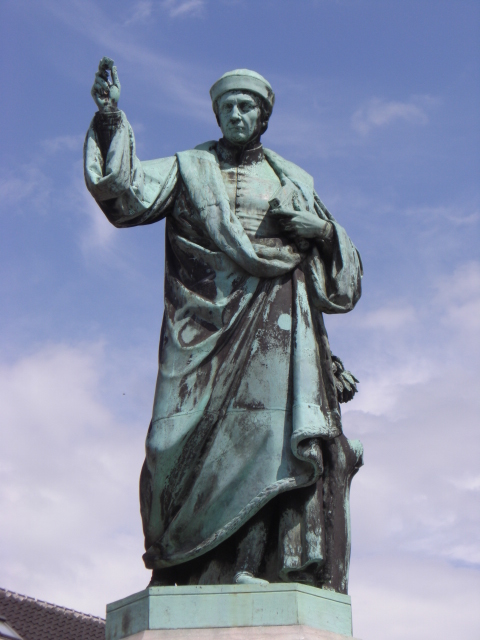
Using the Natureparkcamping to the west of Amsterdam for a base we took mass
transit into the city for a couple of days. The first day we took the train and
the second the hydorfoil fast ferry. Much to our surprise we found out that the
ferry was actually the cheaper option.
We left the bikes safely stored at the campground. With its high number of
drug addicts and high number of bicyles and bike commuters, bike theft is
absolutely rampent. We met one couple whose daughter has had no less than 4
bikes stolen. Lonely planet says that if you take a fancy 21 speed bike into the
city you can expect it to be "nicked" within an hour after you park it. There
are some 500,000 bikes in the city at one time and each year 1/4 get stolen.
Although if you need a bike we're told you can just about raise your hand, say
you need a bike, and then buy a stolen one off the street for about 15€. It's
completely unethical, but evidently it's a regular business in Amsterdam.
Some of the more interesting bikes found in Amsterdam are those with a
wheelbarrow device up front. They seem to be for carrying lots of cargo and
especially for moms toting kids around. We often saw a woman ride by with a
basket full of kids up front.
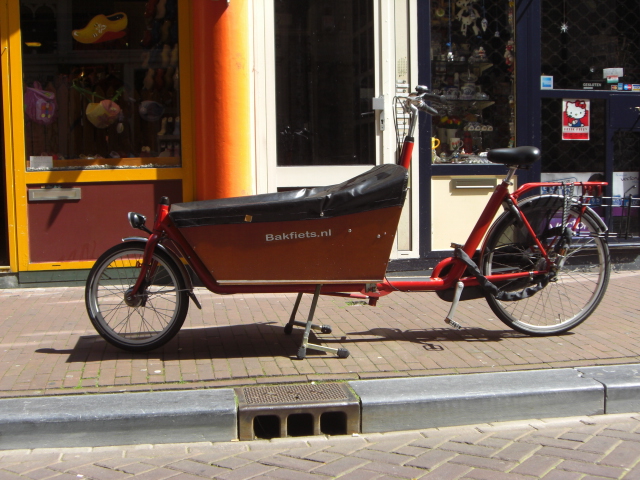
Amsterdam is a city of vice of all sorts. The red light district is famous
and even a tourist attraction. Prostitutes spend their working hours sitting or
standing behind open glass windows all the while dressed in the barest underwear
possible. Although we've seen skimpier clothing on European beaches. Coffee
shops where marijuana is sold and smoked are on every street. It's a city where
almost anything goes. Young people from all over the world flock to Amsterdam in
order to find sex, booze, and drugs.
We came instead to find the other side of Amsterdam. This is a city that is
crisscrossed by canals all dug to provide boat access and to recover land from
the Amstel river. The city itself is named from the first dam built on the
Amstel river.
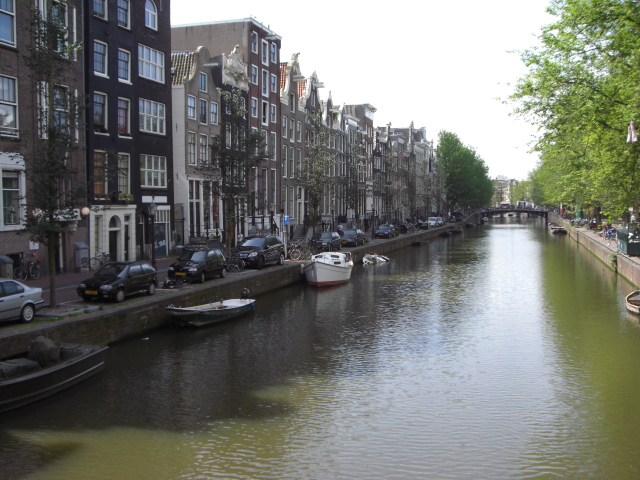
When Holland was at it's peak of prosperity in the 1700s, the wealthiest
citizens built huge houses along these canals. Although citizens with less money
were forced to build up rather than out. Taxes were based on the width of your
house, so 4 to 5 stories of very narrow rooms is the norm. In fact, there's one
house said to be the narrowest in all Europe. With only 2.02 meters width and 6
meters depth it really is one skinny house.
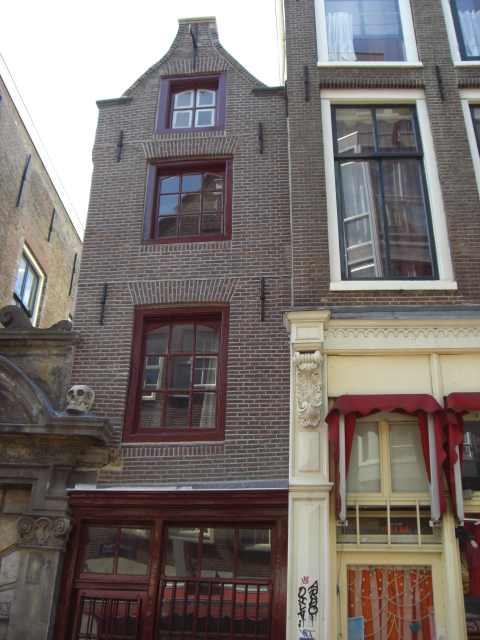
One key attraction of Amsterdam are the canal cruises. We hadn't splurged for
one in any other city as yet, so we decided this would be a good place for this.
It's a canned presentation and all the tour boats take essentially the same
route. But it's rather fun seeing the city at canal level.
One thing you see lining the wider canals are the old canal boats.
Evidentally for a while Amsterdam had an extreme housing shortage. So folks took
up living in refurbished canal boats. The city eventually sanctioned this
accomodation and even now provides water, sewer, and electricity to those parked
legally. Of course there are a lot of illegal boats as well which don't get
these amenities.
One other site we chose to see was the Richts Museum, or at least the portion
that was open. The entire museum is housed in a beautiful 1800s palace that has
been undergoing restoration for some time. It was supposed to be finished in
2008, but is clearly behind schedule. In the meantime, some dozen or so rooms
are open and their most important masterpieces are shown.
Here is where they've housed 4 more of Vermeer's 36 paintings one of which is
the Milk maid. This is the famous painting of a young girl standing by a window
over a table pouring milk from a jug. A beautiful piece of work.
Yet perhaps their most famous painting is a huge Rembrant known as "The Night
Watch". This big painting was originally done as a group portrait for the town
hall and shows men who played important rolls in the obligatory town militia.
Unlike normal group protraits where the people are shown in static positions,
Rembrant shows these men in action. It's as if they were just called to duty
stations and everything is abuzz with activity.
Unfortunately in the 1700s the painting was moved to a different building
with smaller walls. To make it fit they cut a fairly significant slice off of 3
sides. They know this because the captain of the militia portrayed in the
painting had a copy made and this shows the extend of the cuts.
We spent many hours looking at Delft pottery, Silver pieces, paintings, and
furnishings in the museum. And this was just to see their masterpieces. Just
imagine when the rest of the museum is opened. It'll take even longer just to
have a quick look at everything.
Section 3
Amsterdam to Leer, Germany
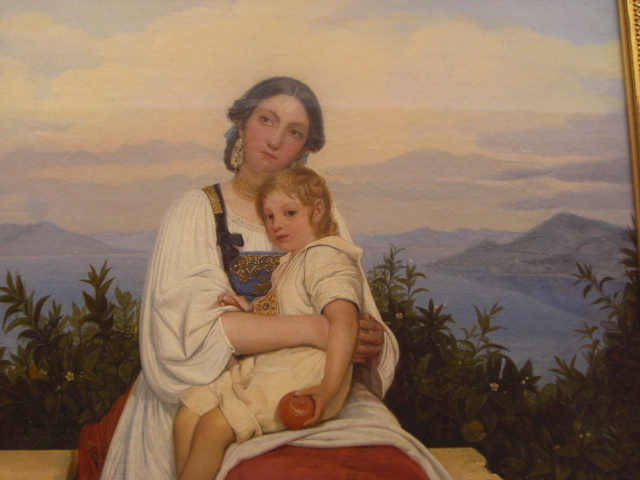
July 18 - 22
Weather reports seemed to indicate that we were in for many days of rain and
true to the report we woke to a fairly heavy downpour. Resigned to the wet
weather we pulled on our rain pants and coats, packed up a very wet tent, and
headed on out under a cloudy sky.
We crossed the Amstel river on the ferry which much to our surprise is free
for cyclists, and then headed for the town of Alkmaar. Alkmaar is another canal
filled town that has several fabulous architectural gems scattered among it's
more modern offerings. The town, though, is most famous for an event rather than
it's old town.
Every Friday in from April through November, it hosts a cheese auction. This
used to be a real business affair where cheese vendors and buyers would come
from all over the country to trade. Today, it's become more of a tourist
attraction. The real cheese auction takes place elsewhere these days. Being
Saturday, we missed the action of the auction. So what we saw was just a busy
market town in the height of Saturday sales. No cheese auction, unfortunately.
When planning to ride along the North Sea we'd been concerned with our
direction. Holland, being so flat, is notorious for having very windy
conditions. With a series of storms and fronts approaching we were expecting the
winds to howl. The important question was, by going southwest to northeast would
we have headwinds or tailwinds.
As it happened, we got lucky. The wind absolutely howled right at our backs.
We flew along. The first day we covered over 70 km and barely felt like we'd
done 50. The second, we hauled off 85 km with no sweat. In 2006 we'd ridden
along the north coast of Spain for over a week and dealt with headwinds the
entire time. So perhaps these tailwinds are our payback.
We made easy time along the coast coming eventually to a decision point. We
could stay hugging the coastline and then take ferries across the 4 islands at
the mouth of the Waldenzee. Or we could cut inland and ride across the
Afsluitdijk. We elected to do the later.
Originally there was one single large sea calles the Zuidzee, that stretched
far inland into the Holland. Ever since the 1700s it had been the dream of every
politian and engineer to block the sea, build polders, and drain the sea to
create more dry land. The technology and money to accomplish this feat came into
being in 1932.
The Dutch built a 30 km long dyke that connected North Hollend with Freisland.
They then built some polders and soon areas that were once shallow ocean were
now farm lands. We understand if you wander around these new dry lands you'll
find former fishing villages that are now nowhere near the ocean. You'll even
find a former bouy now high and dry sitting by the side of a new road here and
there.
The long Afsluitdijk effectively created 2 new seas from the original one,
Ijsselmeerzee and Waddenzee. Of course, being Dutch, they not only put a 4 lane
highway along the dyke but they included a very wide bike path So you can now
have a very nice long ride with great views over the Ijsselmeerzee the entire
way. And if you're headed north you'll usually get a great tailwind to top it
off.
After the long dijk, the road took us though a lot of farm lands with a few
small port towns or farm towns in between. We had a strong wind at our backs and
with just fields and sheep to look at we decided to push on late each day. It is
quite odd that for a route named the North Sea Cycle Route you really don't see
that much of the ocean.
After 2 metric century days we came to the mouth of the Ems river, headed up
river for about 30 kms, crossed back into Germany, and stopped for a couple of
nights in the pleasant town of Leer.
There wasn't anything of particular interest in Leer that caught out
attention. It just seemed a convenient place to take care of a few errands; wash
clothes, cut Brian's hair, shop for a few odds and ends, that kind of stuff. But
if you listen to the ferry conductor for the temporary free ferry across the Ems,
there's all sorts of things to do. Actually he was just trying to give us
pamphlets. The first two we already had. So he kept on digging, absolutely
determined to find something we didn't have. He did come up with a guide book,
in German, for Leer as well as a bike route map we didn't have. He was now
satisfied.
Section 3
Leer, DE to Hamburg, DE
July 22 - xx
A couple of rainy days followed by a couple days of sun, that's what one
Dutch fellow told us is the norm for this area. About once every 10 years they
have a June, July, and August of hot dry weather. But not this year. This summer
is turning out to be just about dead on normal
Although, eventhough it rains for a day we found that it wasn't usually an
all day long rain. There'll be periods of sunshine followed by short downpours.
So with a little fast riding between rain spurts and short waits we were able to
mostly get from point A to B without getting too terribly wet. Long sunny days
would be ideal. But lacking that at least these types of days are tolerable.
Leaving Leer we found we could follow along the land side of the seaside dyke
for most of the way. The Dutch and the Germans have both had several iterations
in the creation of their individual dyke systems. Inland you'll usually find a
smaller dyke, perhaps only about 20 ft high. Next to the sea are the new dykes
which are about 30 ft high. These dykes are big mounds of rock covered with dirt
on which grass grows. Sheep are used as lawnmowers. Consequently we often had a
bunch of sheep poop coating our tires.
From Leer we cruised back up to the mouth of the Ems river. There was an 1
1/2 hour delay at Ditzum where we waited thru their lunch break. We spent the
time taking a short look around the very tiny town. There wasn't much. They have
a very nice restored windmill, several restaurants, a small pretty port, and a
lifesize statue of a lady fish seller. That's about it. So we returned to the
ferry landing to wait.
As time went on more and more bikers showed up for the ride. By the time the
boat was ready to go there must have been a good 30 or so people and bikes not
to mention another 10 or so foot passengers. We wondered if they could fit
everyone on the boat. Yet with careful maneuvering there proved to be plenty of
room. Funny, after this we only saw a few bike tourists each day along our
particular route. There are so many different routes that seeing so many bike
tourists gathered in one spot is unusual.
Clouds began to fill the sky as we pushed aboard the boat. Once off the other
side, the sky was looking downright mean. By the time we got into Emden, just
about 5 km away, it was raining hard. With a short stop for lunch and a brief
wander down the shopping street, we managed to wait out the rain and once again
were off. Even with a delay for the ferry and rain, we still managed a good
distance for the day. It's amazing what you can do with the wind at your back.
Along the North Sea route once you leave the Ems river and return to the
coast you spend a lot more time riding on the land side of the dyke on roads
that often are covered in sheep poop. Sheep poop may be smaller than cow poop,
but there's so much of it you can't avoid going over it and it really likes to
stick to your tires. We were beginning to not like sheep so much.
Soon we started passing through typical beach vacation towns with a lot more
summer vacationers, wide open campgrounds, and that beach carnival atmosphere.
Much of this North Sea coast doesn't have good beachs. They are more mud flats
than anything. The really good beaches are out on the string of islands just off
coast. The thing is you have to take ferries to get to these islands.
Virtually every town has ferry service to at least one island and they have the
accompanying huge parking lots. These towns tend to draw the summer crowds. For
camping we specifically looked for locations without ferry service. This was our
best way to find quiet campsites.
Unfortunately there is really little opportunity to actually ride within site
of the water. With that 30 ft dyke the entire way and the bike path on the land
side, you have to stop, get off the bike, and climb the dyke just to have a
look. We were actually rather disappointed with the scenery because of this.
There was one short stretch where the pavement actually was on the ocean side
of the dyke. From Bensersiel to Neuharlingesiel the road runs right next to the
sea. Now this is what we really had expected of a North Sea route. Too bad there
isn't more miles like that.
July 25- Raiden like crazy all night long. Woke up with squishy ground and
our tent just barely above water. Spent all day running between heavy downpours.
Started to clear a little by evening. Had a howling tail wind almost the whole
day.
Stopped in Wilhelmshaven for lunch and to shop. Got directions from lady on
bike. She told us about their annual Lobscous (sp) festival. As she said it
doesn't look good but it tastes good. There were tables set up everywhere in
town. Several different restaurants were dishing up the stuff. Each plate had 1
piece rolled fish, pickle, beets, something that sort of looked like a creamy
hash with a fried egg on top. We went for a more standard fish meal.
Arrived at a very soggy campground that needs a lot of work.
July 26 - Finally a beautiful day with almost no wind. Even the many wind
turbines were still. Main city of the day was Bremerhaven. Thus is a big port
with lots of cranes in its skyline. It has what looks like a huge maritime
museum that'd be worth a visit someday. It was Sunday and downtown on the quay
was packed. Almost too crowded to ride thru. Went on to Wremen, a much quieter
town with a great little campsite on the inland side of the dyke. They also were
having some sort of festival, very common this time of year. Wremen just seems a
much more pleasant town than a lot we'd seen. It's not big, not old, doesn't
have a big harbor, and doesn't have any ferries to the islands. Much more laid
back atmosphere.
July 27 - Finished our time on the North Sea. Looking forward to the Elbe
river where hopefully we'll actually see water for a change. At the mouth of the
Elbe is a huge shallow area that is part of the National Park Wettermeer. At the
point during low tide it seems to be a big passtime for folks to go wandering
out on the shallow shelf. We learned from a Texan geologist we met that this
particular area is famous as a place where they first learned about the
sedimentation process. In the 30s and 40s the geologists went out in this area
and dug deep ditches so they could study the layers. Not any more. When we went
by there were hunderds of people out on what looked like mud flats wandering
around. There were also horses out there as well as a horse drawn carriage ride
you could buy time on. It really looked strange. To get access to any of these
mud areas you have to show a pass to some person at the fence. They make sure
you pay for both parking and entry.
Cuxhaven is mainly a tourist supply point for folks staying in the hotels and
campgrounds at the point. It also has a descent sized port activity. We stopped
long enough to pick up a new tire, the Elbe bike route maps, some glue, and
other supplies. This was our last farewell to the North Sea and we started the
long trek back south. It's late July and high time to start moving south.
July 28 Took the short route, the North Sea route rather than the much longer
Elbe route. There's not much camping in this section so the shorter distance
made getting to the campsite much easier. Made a short stop at the town of Osten
where they have one of those old transporter bridges like the one in
Middlesborough, England. They've installed a new permenant bridge so this old
transporter bridge is now really just a tourist attraction. A taped message
describing the bridge plays as you sit on the bench moving above the water. We
rae wondering just how many of these old transporter bridges still exist and
still function. We've now seen 3.
We stopped in Stade to look around the old town. They have a very nice old
harbor with a unique wooden covered crane. It's a very pretty town. In the
middle of the harbor they have a permenantly moored boat that even have
artificial crows percehed on its boom. Oddly they even have these metal rhinos
floating on a small raft next to the boat. We weren't quite sure about the
significance of the rhino raft.
Went on to a nice, quiet farm campground well away from any sort of beach or
pool. We were wondering if we can now get away from the summer crowds now that
we're moving away from the North Sea.
APPENDIX A – ROUTE
Netherlands
July 12 Cycle paths thru Santpoort, Overveen, Zandvoort, Noordwijk aan Zee,
Katwijk aan Zee, Wassenaar, Scheveningen to Den Haag. 63.63 km
July 13 Cycle paths down coast to Hoek van Holland, up the Rhine to Maassluis,
North to Delft, back to Campiny Duinhorst. 76.12 km
July 15 Cycle route 1b thru Wassenaar, Katwijk, Noordwijk, Zandvoort. Side
routes to Haarlem, Santpoort to Dreihuis. 68.75 km
July 18 North Sea cycle route through Beverwijk, Castricum aan Zee, Egmond aan
Zee. Althernate route through Alkmaar, Bergen-Binnen. Bike paths through the
Schoorlsche Duinen. North Sea Route through Camperduin, Patten, to Sint
Maartensvlotbrug. 70.29 km
July 19 Back cycle paths through t' Zand, Anna Paulowna, Westerland,
Hippolytushoef, Den Oever. Across the Afsluitdijk. Through Zurich to Harlingen.
85.61 km
July 20 North Sea route 10a through Harlingeng to St. Jacobiparochie. Direct
route to St. Annaparochie and Oudebildtzijl. North Sea Route 10a through Fewert,
Hegebeintum, Holwerd, Ternaard, Wierum, Moddergat, Lauwersoog, Hornhuizen,
Pieterburen. Off route to Eenrum. 117.57 km
July 21 Back roads thru Saaxumhuizen, Breede to Warffum. North Sea Cycle Route
thru Uithuizen, Spijk, Bierum, Delfzijl, Farmsum, Termunterzijl, Nieuweschans,
Bunde, Weener, to Bingum. 114.11 km
Germany
July 23 North sea route thru Hatzum, Nendorp, Ditzum, Petkum, Emden. North
sea route by Wybelsum, Knock, Rysum, Campen, to near Upleward. 62.72 km
July 24 North Sea Route thru Greetsiel, Leybuchtpolder, Norddeich, Dornumersiel,
Bensersiel, Neuharlingersiel, to Harlesiel. 93.92 km
July 25 North Sea Route thru Horumersiel, Hooksiel, Sengwarden, Altengrodeo,
Wilhelmshaven, Dangast, to Süderschweiburg. 81.23 kms
July 26 North Sea Route thru Eckwarderhörne, Langwarden, Fedderwardersiel,
Burhave, Blexen, Bremerhaven, Weddewarden, to Wremen. 82.42 km
July 27 North Sea Route thru Schmarren, Dorumer-Neufeld, Cappel-Neufeld,
Berensch, Arensch, Sahlenburg, Duhnen, Cuxhaven, Müggendorf to near Otterndorf.
59.44 km
July 28 North Sea Route thru Otterndorf, Osterbruch, Altkehdingen, Forst Wingst,
Ellerbruch, Hemmoor, Osten, Großenwörden, Neuland, Himmelpforten, Stade, to
Mittelnkirchen. 85.33 km
APPENDIX B – CAMPSITES
Netherlands
July 12, 13, 14: Camping Duinhorst near Den Haag: (14.80 €/night)
July 15, 16, 17: Naturkaamperpark in Dreihuis: (14.50 €/night)
July 18: Camping Golfzang in Sint Maartenszee: (18.00 €/night)
July 19: City Camping "De Zeehoeve" at Harlingen: (16.00 €/night)
July 20: Town campsite at Eenrum: (11.00 €/night)
Germany
July 21, 22: Marina camping at Bingum: (17.90 €/night)
July 23: Camping am Deich in Upleward: (18.20 €/night)
July 24: Campingplatz in Carolinensiel: (10.00 €/night)
July 25: Campingplatz in Süderschweiburg: (14.00 €/night)
July 26: Campingplatz Am Wremer Tief in Wremer: (11.00€/night)
July 27: Campingplatz See Achtern Diek in Otterndorf: (13.00 €/night)
July 28: Campingplatz in Mittelnkirchen: (10.00 €/night)
References
Lonely Planet Guidebook Netherlands
Bikeline Radkart Nordsee No. 2